Porto's Ponte Luis I Bridge
Gustave Eiffel did NOT build this bridge over the River Douro contrary to what many tourists guides will tell you: his buisness partner did. The Victorian wrought iron Luis I bridge in Porto has become the iconic Hallmark of Porto. It features on most postcards and travel posters advertising the city of Porto as a holiday destination. It was named after Portuguese King Luis I: his wife, Queen Maria Pia, also has a wrought iron Porto bridge named after her, it is further up river.
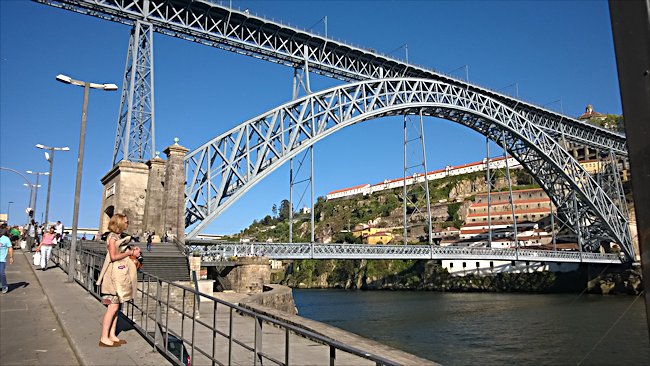
Porto's Iconic King Luis I bridge over the River Douro
As the city of Porto grew in prosperity it needed more efficient way the traffic to cross the river Douro. The Portuguese government in collaboration with the Porto city council decided to hold a competition that asked for the submission of design for a new metallic bridge that could take road traffic from the top of the Douro valley, as well as from the riverbank.
It would replace an existing bridge. The winning design was entered by a partner of Gustave Eiffel, the famous French engineer who went on to build the Eiffel Tower in Paris. His name was Trophile Seyrig and he had been an engineer on the wrought iron Maria Pia railway bridge (Ponte Maria Pia) that spanned the River Douro, which had been completed in 1877.
Trophile Seyrig and his team started construction in 1881. It was completed five years later, when the upper road bridge was opened. The lower road bridge was opened a year later, in 1887. It weighs 3,045 tons and the main arch measures 172 m in length. It is 44.6 m high (223ft high).
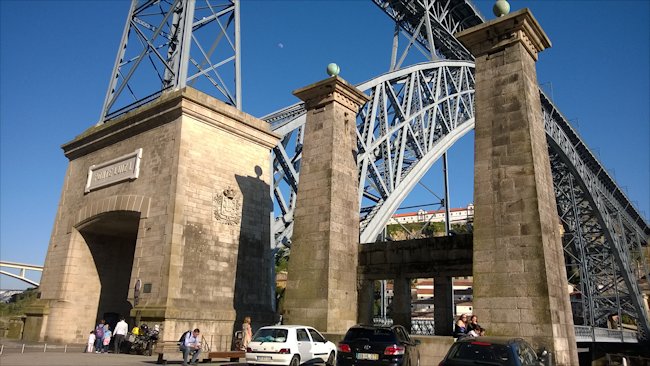
The north bank lower road bridge gateway of the Dom Luis I bridge over the river Douro.
In 1908 electric tram lines were built into the upper road bridge. Porto's wooden trolley buses continued to cross the bridge with passengers until 1993. In 2003 the upper deck was closed to enable the tramlines to be modernised. When it opened again in 2005, the modern metro do Porto light railway system started to run its scheduled line D services.
Vehicle traffic was now banned from using the upper deck of the Ponte Luis I bridge. Pedestrians were still able to cross from one side of the river Douro to the other by the top of the bridge as two walkways had been included in the improvements.
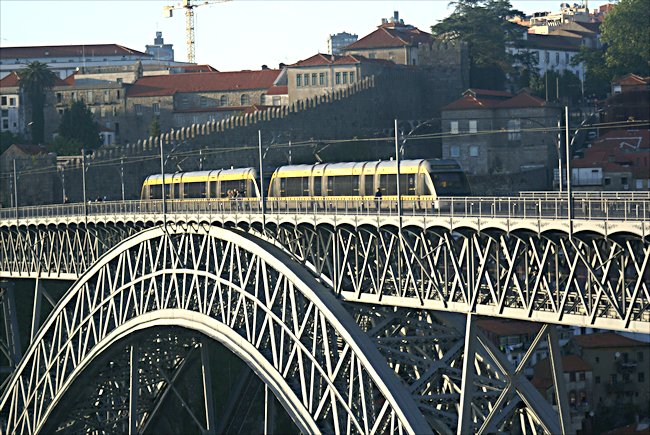
You can take the Metro tram or walk across the top of the Dom Luis I bridge in Porto
The Ponte Luís I bridge is an impressive sight. The contrast with the Victorian wrought iron bridge and the futuristic modern aerodynamic metro trains is startling. Every tourist visiting Porto to take the time to walk over the top of the Ponte Luis I bridge. Other good clear blue sky day you can see for miles. It is free. There is no charge to walk over the bridge. Make sure you take a camera as the views are very picturesque and dramatic.
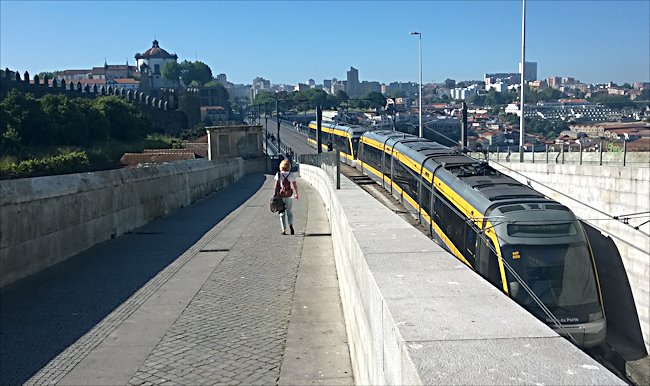
Pedestrians can walk alongside Metro trams over the top pf the Dom Luis I bridge.
Danger
Visitors can still walk both sides of the lower road bridge. Take care, though, as it is always busy with traffic throughout the day and the footpath is not very wide. If you need to cross the bridge in a hurry, it can be very frustrating to be stuck behind a group of tourists taking photographs. Do not risk being knocked over by the fast moving cars. Do not step into the road as the width of the road is small and the cars do not have a lot of space to swerve around you. Be patient.
The longest arched bridge in the World
When the bridge was built, it held the record for having the longest arch until the honeymoon bridge in Ontario, Canada was opened in 1898. Many tourists are wrongly told that this bridge was constructed by Gustave Eiffel. He built the railway bridge further down the river and had no connection with the construction of this bridge that was built by his partner. Gustave was busy with other projects at the time.
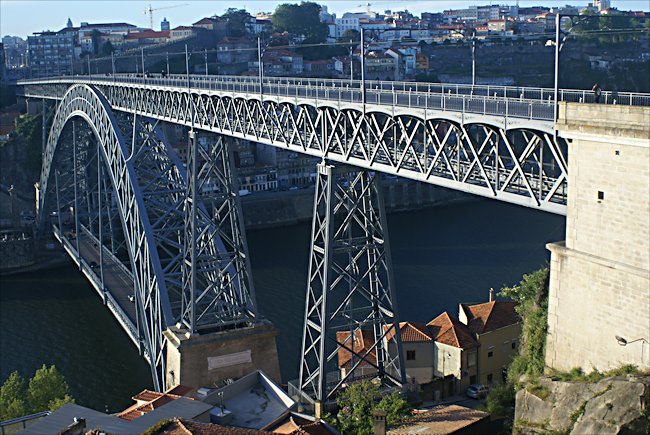
This photo of the Luis I bridge over the river Douro was taken from the top of the south side of the valley side.
Travel Books


Tweet